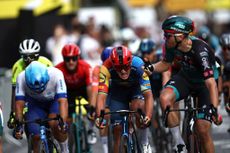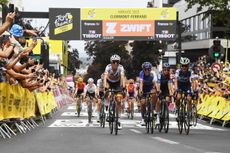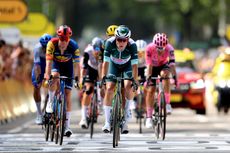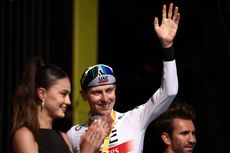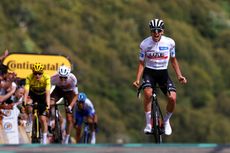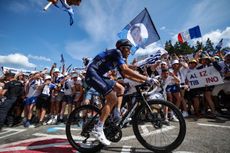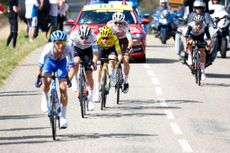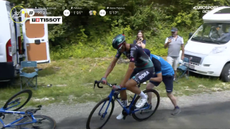Five stages that could shape the Tour de France 2022
Just five of the 21 days of racing which could see the fight for yellow tipped on its head

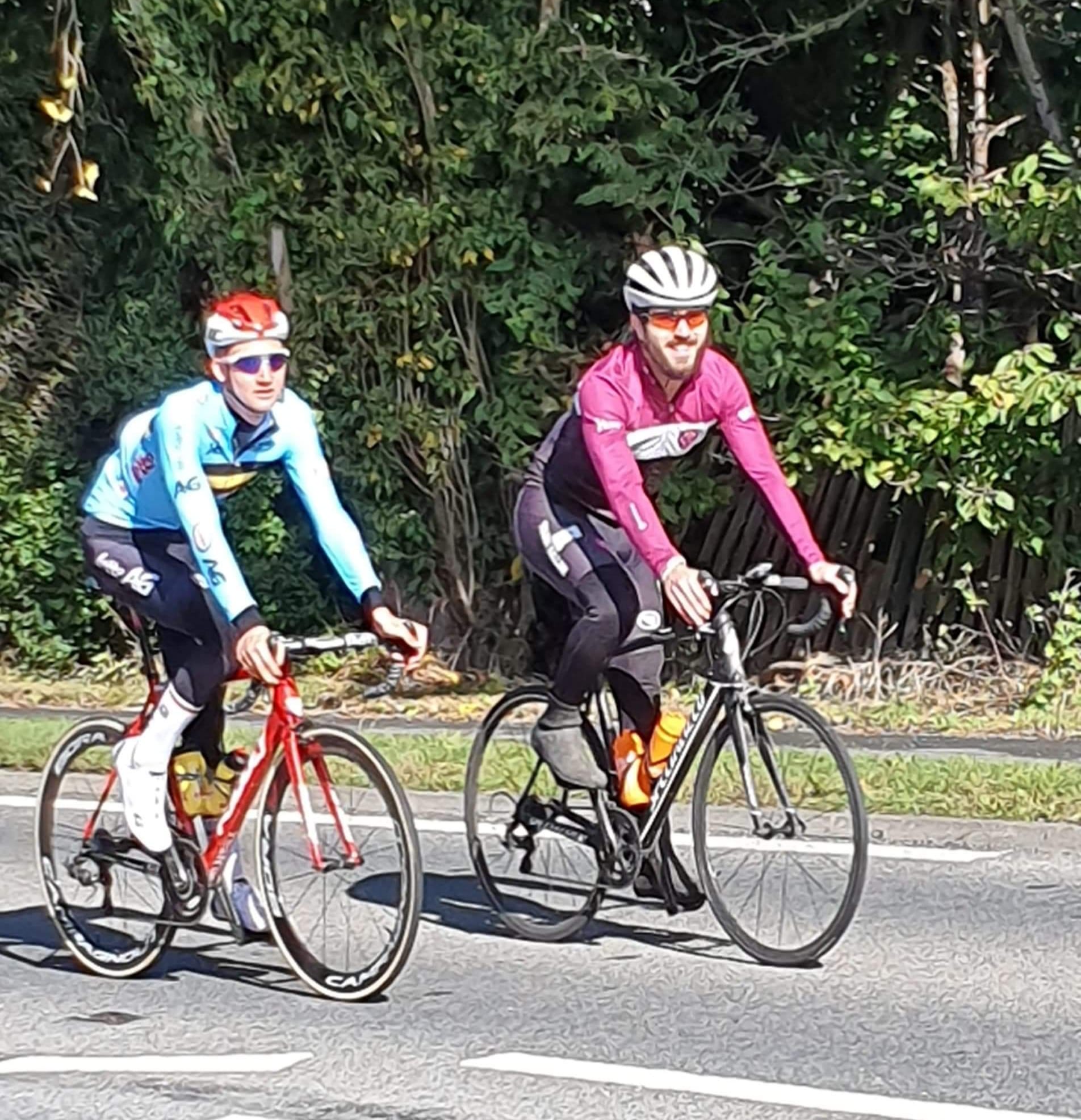
The latest race content, interviews, features, reviews and expert buying guides, direct to your inbox!
Thank you for signing up to The Pick. You will receive a verification email shortly.
There was a problem. Please refresh the page and try again.
TheTour de France 2022 routehas been announced and the 109th edition of the race looks like it could be an all-time classic.
There's some of the best-known climbs in cycling on the route, including Alpe d'Huez and two ascents of the Col du Galibier on two consecutive days, but it isn't all about the mountains, with cobbles also returning to the Grande Boucle for the first time since 2018 in Roubaix.
We've picked out just five stages of this brutal-looking route as ones we think could flip the race onto its head.
Stage five, Lille to Arenberg, Porte du Hainaut (155km)

Of course, the first big shake-up is very likely going to be on the cobbles of northern France. However, they are not the cobbled sectors we know from the brutal Paris-Roubaix, but sectors that have yet to be used by both Roubaix and the Tour.
The last three times cobbles have been used on the Tour de France have seen mostly favourable weather conditions thanks to its summer slot. When Thor Hushovd won in 2010 to the same finish as the 2022 race, he won in dusty dry weather, while 2014 saw Lars Boom take the win with yellow jersey Vincenzo Nibali extending his lead in the driving rain. Tony Martin won solo in 2015 into Cambrai in, again, dry and dusty conditions, while John Degenkolb won from a three-up sprint to Roubaix in the same weather.
Either way, the general classification riders will be very nervous heading into this with the possibility of losing huge chunks of time being very real.
Below is the image of the final 76.5km where all 11 of the cobbled sectors take place.

七个阶段, Tomblaine to La Super Planche des Belles Filles (176km)

In 2020 the time trial on stage 20 that finished atop the asphalt slopes of La Planche des Belles Filles saw one of the most unforgettable sporting moments the Tour has served up, as Tadej Pogačar overturned around 50 seconds on yellow jersey Primož Roglič, to lead by almost a minute on the final stage.
But, this time the route, which is a road race, heads up to the very top on the gravel slopes that were first used in 2019 with Dylan Teuns beating Giulio Ciccone to the line from the break. Ciccone took yellow that day.
A brutally steep ascent, while it isn't the longest it's the first pivotal summit finish of the race and will be a key focus for the GC contenders at the end of the first week.

Stage 12, Briançon to Alpe d'Huez (166km)

It feels like a very long time since we last saw the 21 hairpin bends of Alpe d'Huez, but while 2018 isn't too long ago time-wise, there's a new generation of riders leading the way at the Tour.
Stage 12 is the same stage number as in 2018 but takes on the three brutal climbs of the area. Starting in Briançon, the race then heads up the Col du Lautaret side of the Col du Galibier, descending into Valloire and down the Col du Télégraphe into Saint-Jean-de-Maurienne. They will have ridden up the other way the day before.
The race then takes on the steep and irregular slopes of the Col de la Croix de Fer, the second climb of the day heading over 2000 metres in altitude. They will then descent to Allemond before riding the valley road to Bourg-d'Oisans and up the Alpe to finish. A truly gruelling day that will test the big names fighting for yellow.

Stage 18, Lourdes to Hautacam (143km)

这是一段时间以来,我们已经看到山坡上of Hautacam grace the Tour's route. 2014 was the last time with Vincenzo Nibali riding to his fourth stage win in a race that he completely dominated after the abandons of Chris Froome and Alberto Contador.
The 17.3km climb isn't the steepest in the world or even in this race - with steeper ones coming earlier in the stage even - but the average gradients of 6.8 per cent will prove to be very testing to the top names who will likely be on their last legs after almost three weeks of racing. Those who don't excel against the clock will need to attack on this stage to try and deliver a killer blow before the stage 20 time trial.

Stage 20, Lacapelle Marival to Rocamadour (40km ITT)

Of course, the final time trial in any Grand Tour has a major factor on deciding who will take yellow the next day on the roads of Paris. But on this one, the route is largely flat on the 40km drill against the clock could prove very difficult for some of the GC men with some tricky lumps to deal with in the final third of the day.
There hasn't been a time trial around this distance since the 2012 and 2014 editions, which both featured time trials over 50km in the route.

This one isn't too straight-forward either with the two short kicks in the last part of the stage making riding on the time trial bike tougher than it already was. If the GC is close then it will be vital that the riders have a good day on the bike.
The Tour de France 2022 starts on Friday, July 1 in the evening around the Danish capital of Copenhagen with a 13km time trial, before winding it's way around Denmark and France, with brief dips into Belgium and Switzerland before finishing in Paris on Sunday, July 24.

Thank you for reading 10 articles this month* Join now for unlimited access
Enjoy your first month for just £1 / $1 / €1
*Read 5 free articles per month without a subscription

Join now for unlimited access
Try first month for just£1 / $1 / €1
Get The Leadout Newsletter
The latest race content, interviews, features, reviews and expert buying guides, direct to your inbox!
Hi, I'm one of Cycling Weekly's content writers for the web team responsible for writing stories on racing, tech, updating evergreen pages as well as the weekly email newsletter. Proud Yorkshireman from the UK's answer to Flanders, Calderdale, go check out the cobbled climbs!
I started watching cycling back in 2010, before all the hype around London 2012 and Bradley Wiggins at the Tour de France. In fact, it was Alberto Contador and Andy Schleck's battle in the fog up the Tourmalet on stage 17 of the Tour de France.
It took me a few more years to get into the journalism side of things, but I had a good idea I wanted to get into cycling journalism by the end of year nine at school and started doing voluntary work soon after. This got me a chance to go to the London Six Days, Tour de Yorkshire and the Tour of Britain to name a few before eventually joining Eurosport's online team while I was at uni, where I studied journalism. Eurosport gave me the opportunity to work at the world championships in Harrogate back in the awful weather.
After various bar jobs, I managed to get my way into Cycling Weekly in late February of 2020 where I mostly write about racing and everything around that as it's what I specialise in but don't be surprised to see my name on other news stories.
When not writing stories for the site, I don't really switch off my cycling side as I watch every race that is televised as well as being a rider myself and a regular user of the game Pro Cycling Manager. Maybe too regular.
My bike is a well used Specialized Tarmac SL4 when out on my local roads back in West Yorkshire as well as in northern Hampshire with the hills and mountains being my preferred terrain.
-
-
 “一切就完美”:Philipsen Meeus失败to win stage 21 of the Tour de France
“一切就完美”:Philipsen Meeus失败to win stage 21 of the Tour de FranceJonas Vingegaard finshes safely to confirm overall victory
By Stephen Puddicombe •Published
-
 ‘I really messed up’: Why didn’t the favourites chase Lotte Kopecky at the Tour de France Femmes?
‘I really messed up’: Why didn’t the favourites chase Lotte Kopecky at the Tour de France Femmes?The Belgian put 41 seconds into the GC contenders on stage one, but the time gap is no cause for concern
By Tom Davidson •Published
-
 How to watch Tour de France stage 21: live stream the action
How to watch Tour de France stage 21: live stream the actionEverything you need to know to watch Saint-Quentin-en-Yvelines to Paris Champs Élysées
By Cycling Weekly •Published
-
 Tom Pidcock: ‘I felt like a pretender in the Tour de France GC group’
Tom Pidcock: ‘I felt like a pretender in the Tour de France GC group’Ineos Grenadier says Matej Mohorič's emotional post win interview from stage 19 resonated with him
By Vern Pitt •Published
-
 Adam Yates says ‘less pressure’ key to Tour de France third
Adam Yates says ‘less pressure’ key to Tour de France thirdUAE Team Emirates co-leader says he still thinks Tadej Pogačar is the best rider in the world despite defeat by Jonas Vingegaard
By Vern Pitt •Published
-
 'I just cracked myself': Tadej Pogačar reflects on second consecutive Tour de France defeat
'I just cracked myself': Tadej Pogačar reflects on second consecutive Tour de France defeatUAE Team Emirates rider delighted to feel good at the end of third week, and take second stage win, despite setbacks
By Adam Becket •Published
-
 Tadej Pogačar sprints to Tour de France stage 20 spoils
Tadej Pogačar sprints to Tour de France stage 20 spoilsSlovenian wins mountain-top finale while Vingegaard takes the Tour title
By Stephen Shrubsall •Published
-
 'It feels like a page of my story is ending today': With one last doomed Tour de France ride, Thibaut Pinot exits
'It feels like a page of my story is ending today': With one last doomed Tour de France ride, Thibaut Pinot exitsThe Frenchman tried, he really tried, but it wasn't quite enough on stage 20
By Adam Becket •Published
-
 Who's leading the Tour de France 2023 after stage 20?
Who's leading the Tour de France 2023 after stage 20?Simon Yates and Carlos Rodríguez swap places after the latter takes an early tumble
By Stephen Shrubsall •Published
-
 'It looks like I'm on my son's bike': Nils Politt on his Tour de France bike change nightmare
'It looks like I'm on my son's bike': Nils Politt on his Tour de France bike change nightmareThe Bora-Hansgrohe rider tried three times to get the right bike on stage 19 and failed
By Adam Becket •Published

